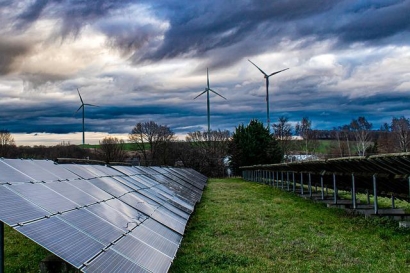
Yet, some solar panel installers have concerns about pests. As they take advantage of their solar panels, people see the potential damage they cause when left unchecked. However, one of the most effective ways to keep pests away would be to have built-in pest-proof features.
Keeping pests away from solar panels is vital for various reasons. For one, they can cause damage that affects the system's efficiency. In turn, the solar panels will produce less energy and you will have to replace them sooner. This can be expensive, especially if you have an extensive solar panel system.
The most common pest problem is rodents gnawing through the wires. Rodents have sharp teeth and like to chew through everything, including cables. Once these pests eat away at wires, they can cause short circuits. This not only damages the panels — it also leads to fire hazards within the home. Rodents may also enter the home through a damaged panel and cause further deterioration, leading to decreased efficiency and higher maintenance costs in the long run.Additionally, the pests that enter the home can spread bacteria and diseases by leaving droppings throughout the house. Coming into contact with these diseases can cause serious health problems and pose threats to children and older people.
Not all pests have a natural attraction to solar panels. However, several factors contribute to their appeal to solar panel systems.The first reason is heat. Because solar panels must face the sun to generate electricity, the systems become hot. This can be off-putting to some critters, but it is also a draw for others. Some insects — like bees and wasps — are even attracted to the electromagnetic energy solar panels emit.
Another reason solar panels might attract pests is light. The large amount of light they reflect can attract insects looking for warmth or light sources.
A solar panel can also serve as a food source for birds, lizards and other animals. Since solar they are an attractive place for insects, birds and other animals will hunt in these places for food sources.
Industry professionals must take measures to protect solar panels by keeping the area clean and free of aspects that attract pests. They also must regularly check it for damage and ensure no holes or tears allow for infestation.
Solar energy is growing at a rapid pace and with that growth comes innovation. The idea behind pest-proof measures built into solar panels is simple — it prevents pests from damaging them by making them less accessible or harder to chew on surfaces.
Professionals may build future solar panels to include pest-proof measures. This is good news for homeowners who want to reduce their carbon footprint and avoid wildlife overrunning their homes.
Fortunately, there are pest-proof measures developed durable enough to withstand encounters with wildlife. These features include adding slots or holes so animals can see through without getting tangled up in wires or caught in glass pieces. Some companies have also started using materials birds do not like touching or sitting on — like copper — instead of steel or aluminum frames.
Scientists are also working on designing solar panels that do not attract bugs. However, they have not figured out exactly how yet — it may be possible by creating an antifouling coating on top.
The antifouling coating can reduce the amount of space bugs take up on solar panels and make them less likely to stick, but it is expensive and has some drawbacks. The coating is usually made from metal particles that work like tiny magnets and can be costly for large-scale installations. In addition, the layer needs replacement every few years as it wears down over time.
The future of solar panels will be very bright. Solar panels may not be pest-proof today, but there are many ways to ensure yours are safe from pests. The best way to protect your solar panels is to install them on top of a sealed roof and properly maintain them. That way, they are out of reach for most animals.

